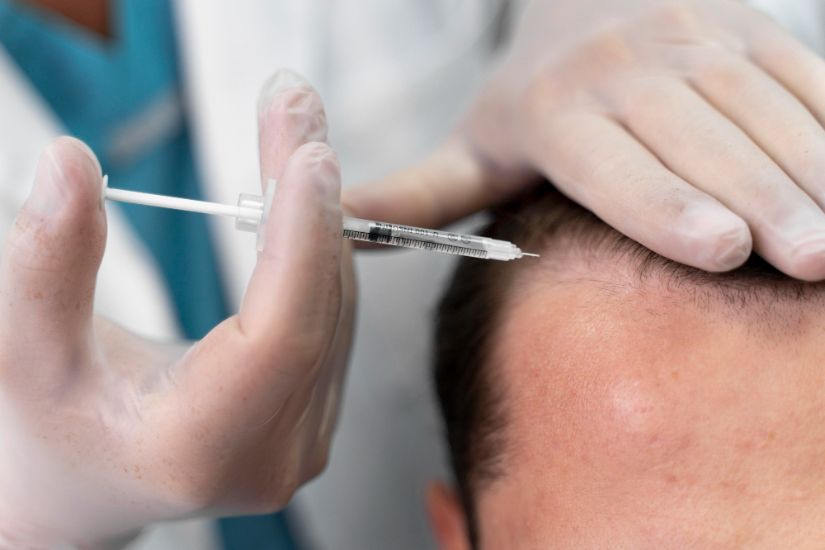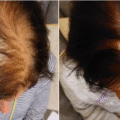Stimulate Hair Growth from Within
Tap into your body’s natural healing ability to combat thinning hair. PRP (Platelet-Rich Plasma) Therapy is a safe, non-surgical solution that helps restore hair density and vitality.
What Makes PRP a Go-To for Hair Loss?

PRP therapy is a regenerative treatment that uses your own blood to trigger hair growth. By isolating platelet-rich plasma from a small blood sample and injecting it into thinning areas of the scalp, the treatment stimulates weak follicles, enhances blood flow, and kickstarts healthier hair regrowth.
It’s increasingly used in top US hair clinics as a go-to option for early hair thinning, pattern baldness, and even post-transplant recovery. Safe, natural, and clinically backed.
What Exactly Is PRP Hair Treatment?
PRP (Platelet-Rich Plasma) hair restoration involves drawing your blood, spinning it in a centrifuge to isolate platelets, and injecting the rich growth-factor serum back into your scalp.
Here’s the step-by-step process:
- Blood Draw: Around 10 to 60 ml of blood is drawn from your arm.
- Centrifuge Spin: The blood is spun rapidly to separate platelet-rich plasma from red blood cells and plasma.
- Scalp Injection: PRP is injected into areas with thinning hair using a fine needle, reactivating dormant follicles and improving growth.
How PRP Works in Your Scalp
After 10 minutes in a centrifuge, your blood separates into three layers:
- Red blood cells and white blood cells at the bottom
- Platelet-rich plasma (PRP) in the middle
- Platelet-poor plasma on top

The middle layer—PRP—is what powers the treatment. Packed with growth factors like PDGF, VEGF, and TGF-β, this concentrated plasma encourages follicular repair, improves blood supply, and triggers the growth phase of the hair cycle.
PRP sessions typically take place every 2 to 4 weeks over 3 to 6 months, depending on your case. Results become more visible with each session.
Can PRP Actually Regrow Hair?
Yes, and studies support it.
- High platelet concentration in PRP injections has been linked to increased follicle size and improved hair density.
- Many patients report noticeable regrowth by the third month of treatment.
This makes PRP a solid option for early to moderate hair loss before considering surgical procedures.
How Successful Is PRP Hair Therapy?
- 84% of participants across six studies reported positive results after PRP therapy.
- Only 4 out of 20 experienced recurring hair loss within a year.
- Most patients reported an improvement in overall quality of life due to increased hair density and confidence.
What Types of Hair Loss Respond Best to PRP?
PRP therapy has proven advantageous for various forms of hair loss, including:
Androgenetic Alopecia (Male & Female Pattern Baldness)
- PRP helps neutralize the impact of DHT, a hormone responsible for miniaturizing hair follicles. In women with pattern baldness, 86% reported improvement after just 3 sessions.
Post-Transplant Hair Support
- PRP speeds up healing and stimulates new hair growth post-transplant. A study on FUE transplant patients showed those receiving PRP saw significantly more new hair over 10 mm in length.
Alopecia Areata
- For autoimmune-related hair loss, PRP offers a steroid-free alternative. Clinical data shows PRP significantly outperformed steroid creams and placebo treatments in hair density and regrowth.
Why More People Are Turning to PRP for Hair Regrowth
Stimulated Hair Growth
- Reawakens weakened follicles, increasing thickness and coverage
No Downtime
- Get back to your day immediately post-treatment
Improved Hair Quality
- Strengthens existing strands for fuller, healthier-looking hair
Non-Surgical
- No cutting, no scarring, just your body doing what it does best.
Testimonials
From in-person diagnosis to Zoom consultations, my journey with Harley Hair DX has been smooth and reassuring. After Regenera treatment, I saw visible improvement in just 2 months — my confidence is finally coming back thanks.

B.U
I’m amazed by the regrowth in all affected areas. New patches have almost completely stopped, and progress has been faster than anything I’ve tried before. I finally feel hopeful again after years of frustration.

H.G
My doctor was genuinely invested in my progress and supportive throughout. The range of treatments here is far more advanced than anywhere else — and their compassion made a difficult process much more bearable.


